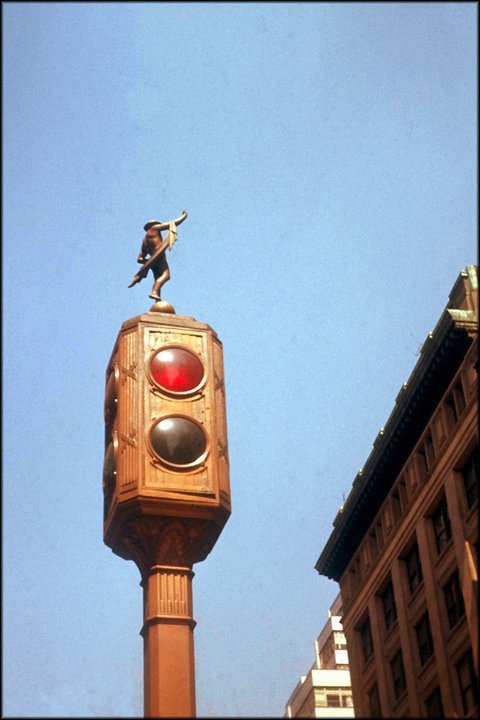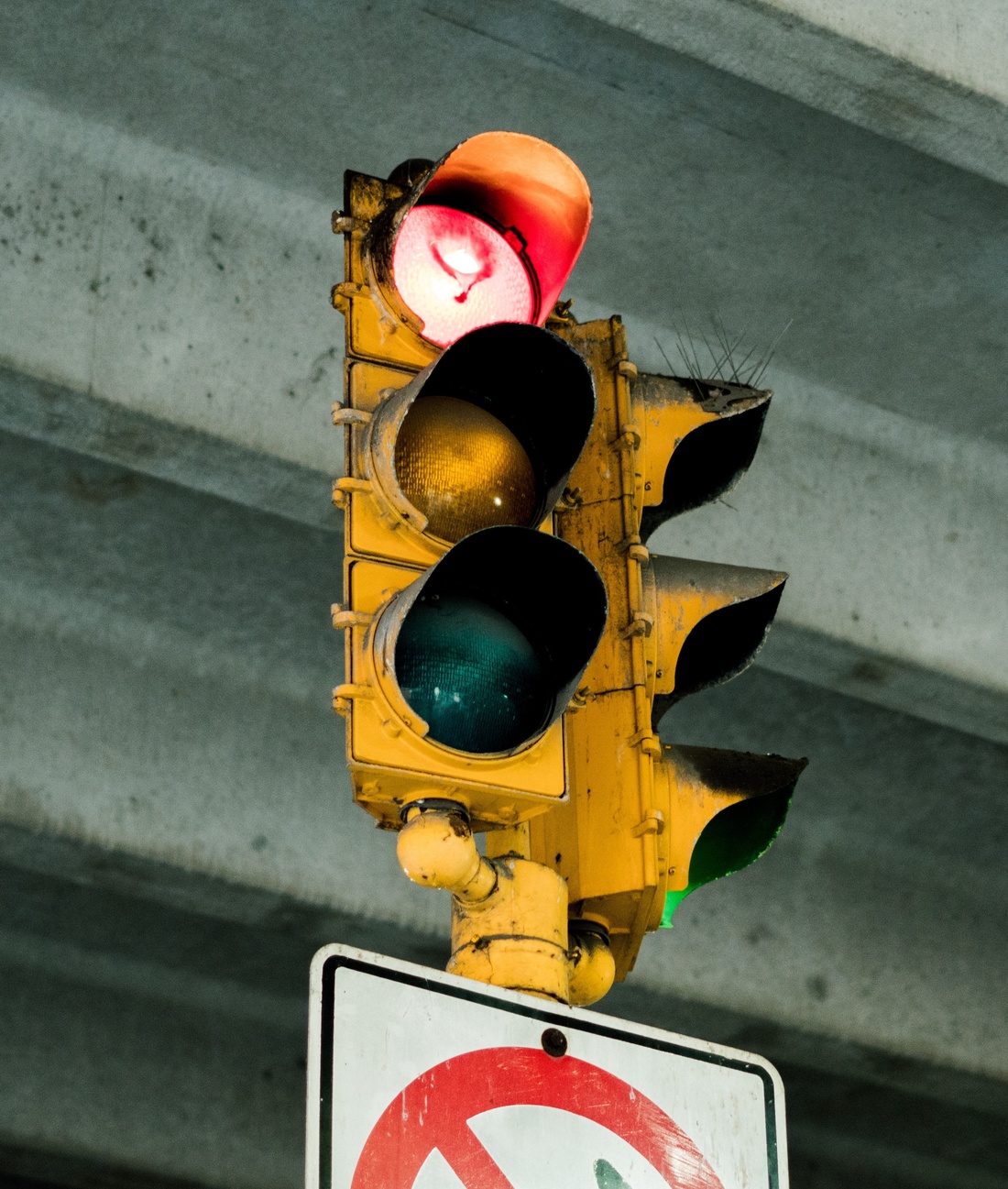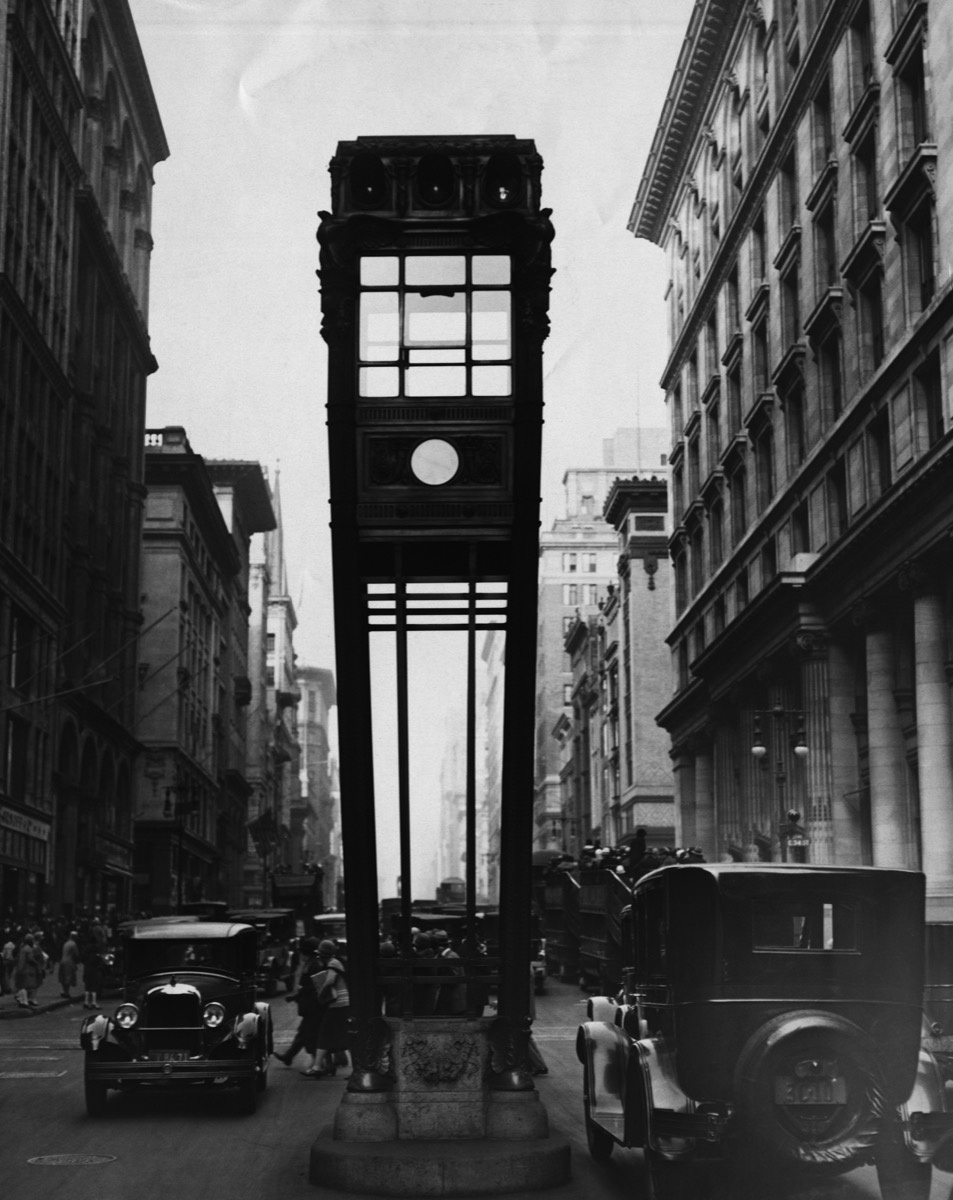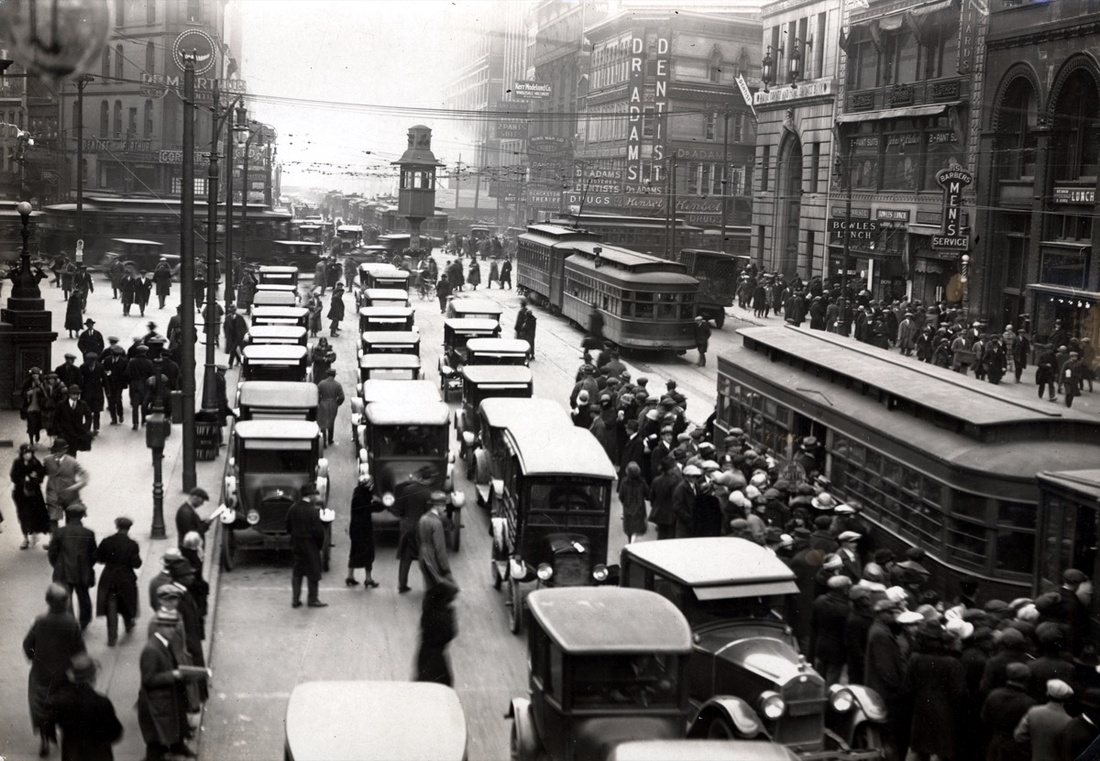A Brief History of Traffic Lights
 Image via Mitch Kahn.
Image via Mitch Kahn. Image via Hermes Rivera.
Image via Hermes Rivera.
In the early 20th century, street congestion along New York’s Fifth Avenue was so bad that it might take 40 minutes to get from 57th to 34th Street. Horses, carriages, pedestrians, street cars, bicycles, and automobiles all competed for limited space along the city’s grand boulevard. Collisions were commonplace, especially as cars began to rule the road, and for the high-end department stores that dotted the thoroughfare, bad traffic meant bad business.
It was thanks to a generous gift from millionaire physician and New York commissioner of traffic, Dr. John A. Harriss, that the city’s traffic problem finally got a reprieve. His 1920 design for a simple, two-light signal, which consisted of a wooden shed housing light bulbs and supported by a steel base frame, was nothing to look at, but it quickly helped to solve the problem of endless gridlock. By 1922, an elegant neoclassical bronze tower design by Joseph H. Freedlander was unveiled, further cementing the importance of signaling systems in the life of the thriving metropolis. Notably, both of these early systems used green for “Stop” and white or clear for “Go.”
Nowadays, the red, yellow, and green glow of the common traffic light is a familiar site around the world, so ubiquitous that drivers and pedestrians alike are virtually unaware of the complex system that continues to play a critical role in our everyday lives. But this quotidien device wasn’t always part of the urban fabric, nor were its earliest prototypes without flaw—and its design has undergone a number of iterations and refinements over the past century.
 Photo by George Rinhart/Corbis via Getty Images.
Photo by George Rinhart/Corbis via Getty Images. Photo of Commissioner Grover Whalen, along with a crowd of others, examining the new signal posts at 57th Street and 5th Avenue. Photo via Getty Images.
Photo of Commissioner Grover Whalen, along with a crowd of others, examining the new signal posts at 57th Street and 5th Avenue. Photo via Getty Images.
Harriss and Freedlander were the first to bring the traffic signal to New York City, but they were certainly not its inventors. Signaling systems had been in use on railroads across Britain and America throughout much of the 19th century; by 1868, a British railroad engineer named John Peake Knight had modified one such system for use on city streets. Installed outside London’s Houses of Parliament and operated manually by a traffic cop, Knight’s traffic signal used semaphore arms—colored posts that can be adjusted to different angles—borrowed from the railroad system. At night, these were replaced with gas-powered red and green lamps.
Unfortunately, the world’s first traffic signal was short-lived; less than one month after it was installed, it exploded, killing a policeman.
It was the advent of widespread electricity and the rise of the motor vehicle that led to the traffic signaling systems we’re more familiar with today. The very first known electrical system—the antecedent that Harriss and Freedlander based their later designs on—was created by Lester Farnsworth Wire, a Salt Lake City police officer in 1912. His design was simple: He created a wooden box resembling a bird house, and built a pole on which to mount it. He then dipped light bulbs in red and green paint, mimicking the colors used for railroad lights, and connected the box to the overhead wire system used for trolley cars. It was controlled by a switch that was operated by a policeman nearby.
 Detroit, MI circa 1920. Photo via Wikimedia Commons.
Detroit, MI circa 1920. Photo via Wikimedia Commons.
While Wire’s system was indeed revolutionary, the title of world’s first electric traffic signal goes to a system installed on August 5, 1914, at the corner of Euclid Avenue and East 105th Street in Cleveland, Ohio. Based on a design by James Hoge—the “Municipal Traffic Control System,” patented in 1918—the Cleveland signals included four pairs of red and green lights that served as stop-go indicators. Crucially, the manually operated system was designed in such a way that conflicting signals were impossible.
Cleveland was the site of another important first in traffic signal history: It was here that Garrett A. Morgan, an African-American inventor and newspaper owner, designed and patented a T-shaped electrical system with an interim “warning” position—a precursor to today’s yellow light. It was after Morgan’s observation of one too many collisions that he developed the intermediate signal setting that would ensure safe passage across a busy intersection. His design was never realized, but it played a crucial role in the development of the three-light system used all over the world today.
Early traffic signals employed a range of colors to convey commands, but the system that has stuck with us is largely based on that of the railroad, where red, which has the longest wavelength of any color on the visible spectrum, signaled a warning, or “Stop.” Green, which has a wavelength only dwarfed by that of red and yellow, was similarly used in railroad applications. (Legend has it that the use of green as “Go” was popularized after engineers mistook a star for the previously clear or white “Go” signal.)
By 1929, New York city officials had also embraced the red-green binary, dismantling the hulking bronze towers along Fifth Avenue in favor of a simple, red-and green-light design, also by Freedlander, that he crowned with a bronze figure of Mercury on top. For over two decades, the Mercury signals were a fixture of New York’s grand avenue; it wasn’t until the 1950s that they were retired in favor of a more modern, three-color traffic signal that Loren W. McOmber had designed and patented in the 1920s—and which has become a quintessential part of the fabric of cities today.
—Andrew Gardner


No comments:
Post a Comment